Health Checks
Optimizer will assess the health of your Jira instance using a set of checks which find common problems such as unused or duplicate configuration elements. You can customise the checks and view the history of the results to track the health of your instance over time.
https://youtu.be/xXqhFxY798wHealth Checks Overview
You can access the Health Checks feature via the left-hand navigation menu inside Optimizer. This will take you to a page showing your Jira instance's current health score and a breakdown of the results in each category of checks.
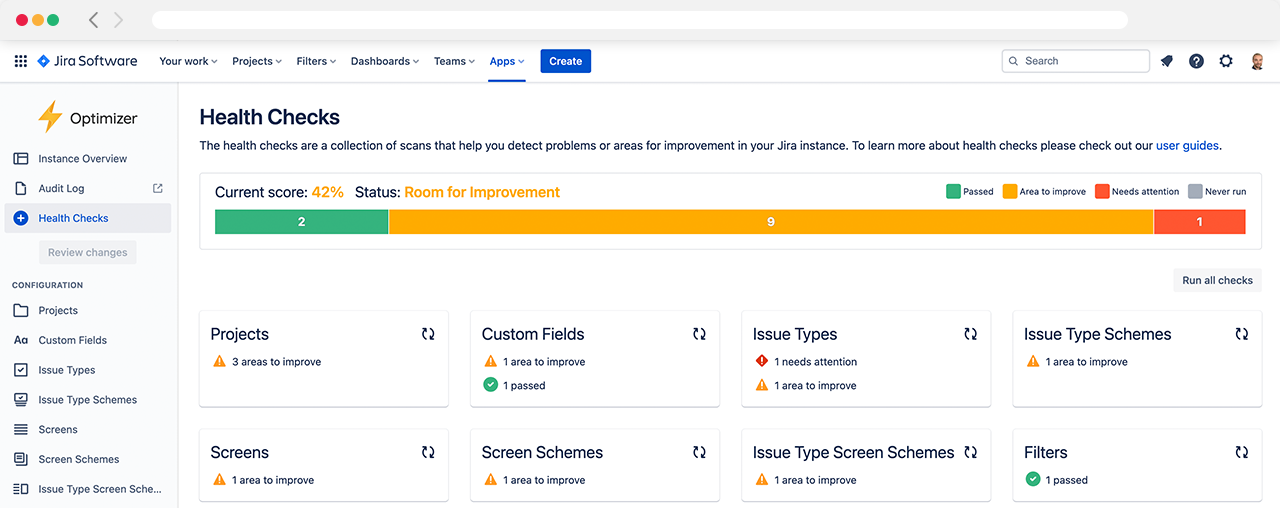
Running health checks
You can run all of the checks in every category by clicking the Run all checks button. Each category will take a different time to complete, depending on the amount of data of each type you have in your instance; progress bars show how far along the various categories are.
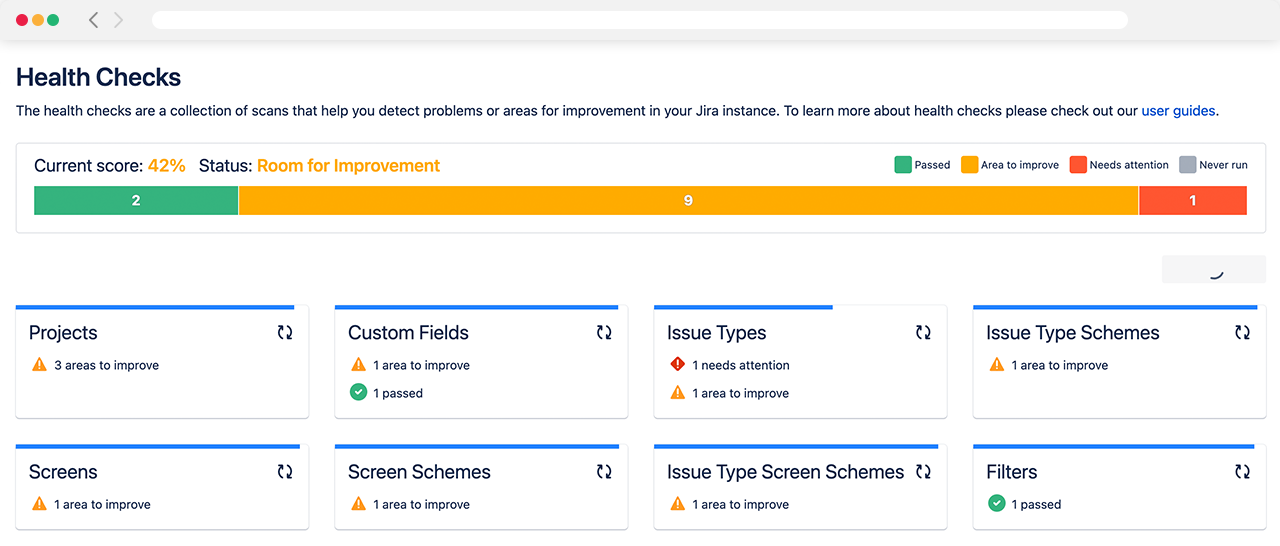
While health checks are running, you can navigate to any other part of the app and the checks will continue running in the background. However, if you navigate away from Optimizer or refresh the page then the progress will be lost.
You can also run all the checks in a specific category by clicking the ‘Refresh’ button on that category. Similarly, if you click on a specific category then you will see the checks within that category and can run them individually with the ‘Refresh’ button (F).

Want to see more checks? Let us know which health checks you want to see and we will add it to Optimizer (if technically possible).
Viewing health check results
After a health check has completed, it will have one of the following statuses:
Pass: No problems were found with this check
Warning: This represents an area to investigate because there is likely room for improvement
Fail: A problem that could negatively impact your instance and end users (e.g. by creating a significant maintenance burden) and should be addressed.
For example, in the image below, a check in the Filters category passed (B), three checks in the Projects category were warnings (C), and one check in the Issue Types category was a failure (D). Any health checks which have never been run are marked with a grey indicator (E).
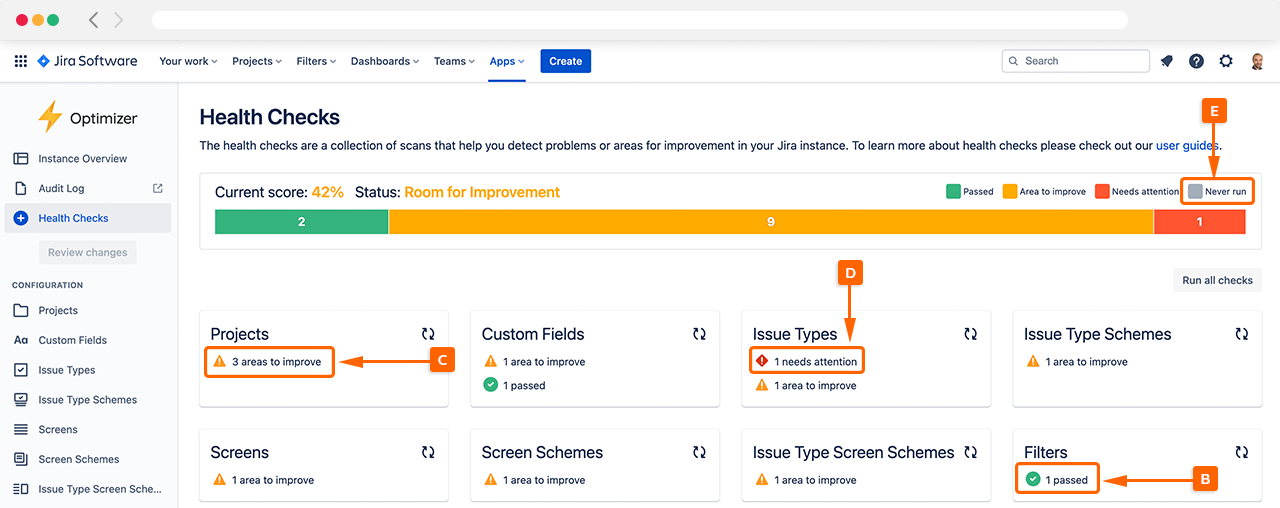
Most recent completion date/time
Each health check has a date and time showing when it was last run (G).

The number of results shown for a check is accurate at the time of completion; if changes are made to the data in your Jira instance, then this number may become outdated. If there appears to be a mismatch between the results data and the number of reported results, we recommend re-running the checks.
Customising health checks
All of Optimizer’s health checks can be customized. For example, in health checks that detect duplicate items, you can specify whether you want to search for exact duplicates or do a more flexible search to include items that nearly match but could be slightly different.
You can access the customization options for a health check by clicking on the relevant cog/settings icon, as shown in the image below.
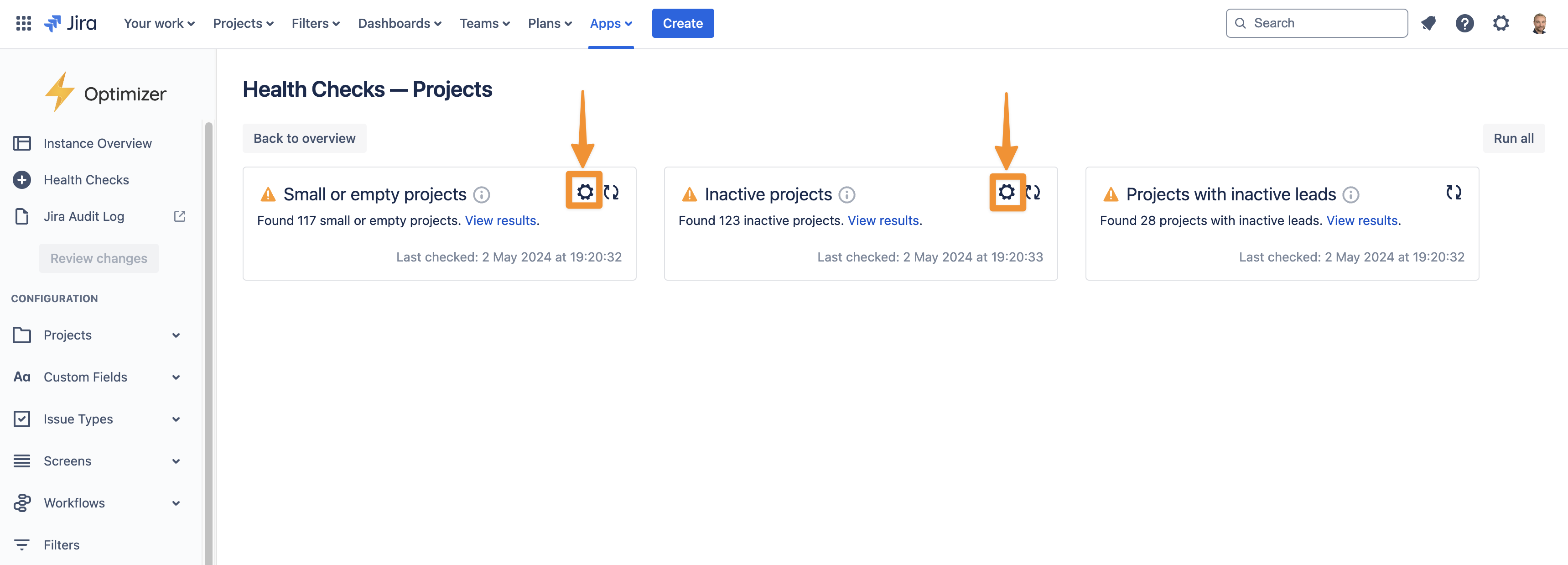
Easily configure your health checks by clicking the ‘Settings’ icon
The preferences for each health check are kept in sync for all users on your instance; if you change one of the settings, the same change will be applied for your teammates. This is so that, as an organization, you can agree on a consistent definition of what constitutes a “problem” in your configuration.
Disabling health checks
If one of Optimizer’s health checks is not relevant to your organization then you can disable it. This prevents the health check from being run or contributing to the overall health score for your instances.
You can disable or re-enable a health check by selecting the ‘Enable health check’ checkbox (H).
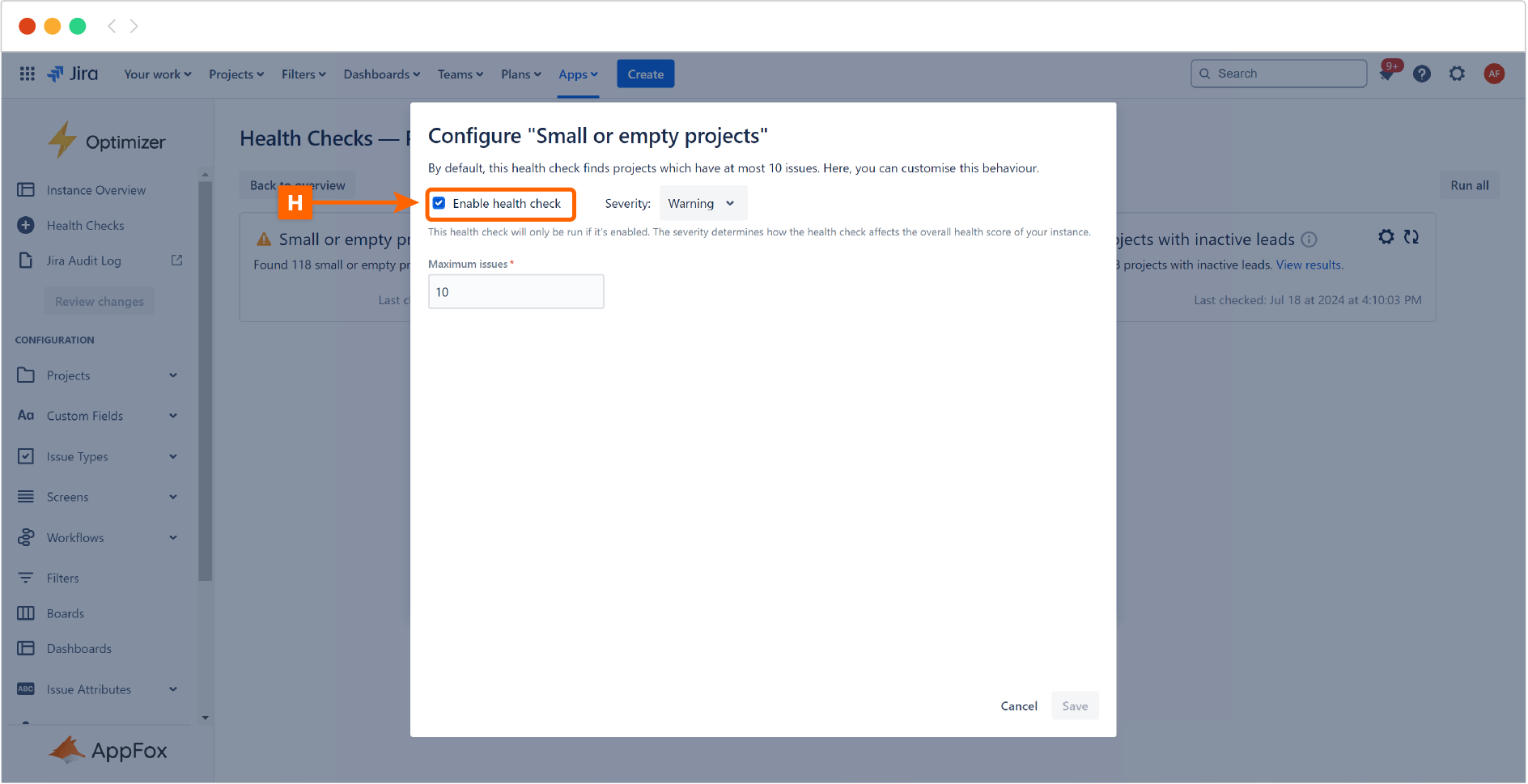
Health check severity
To customize how each health check affects the health score for your instance, you can change the health check severity. The options are:
Failure - this indicates any area that requires improvement if the health check finds results
Warning - for an area to improve if there are results
You can change the severity of a health check by selecting the desired options from the severity dropdown field (I).
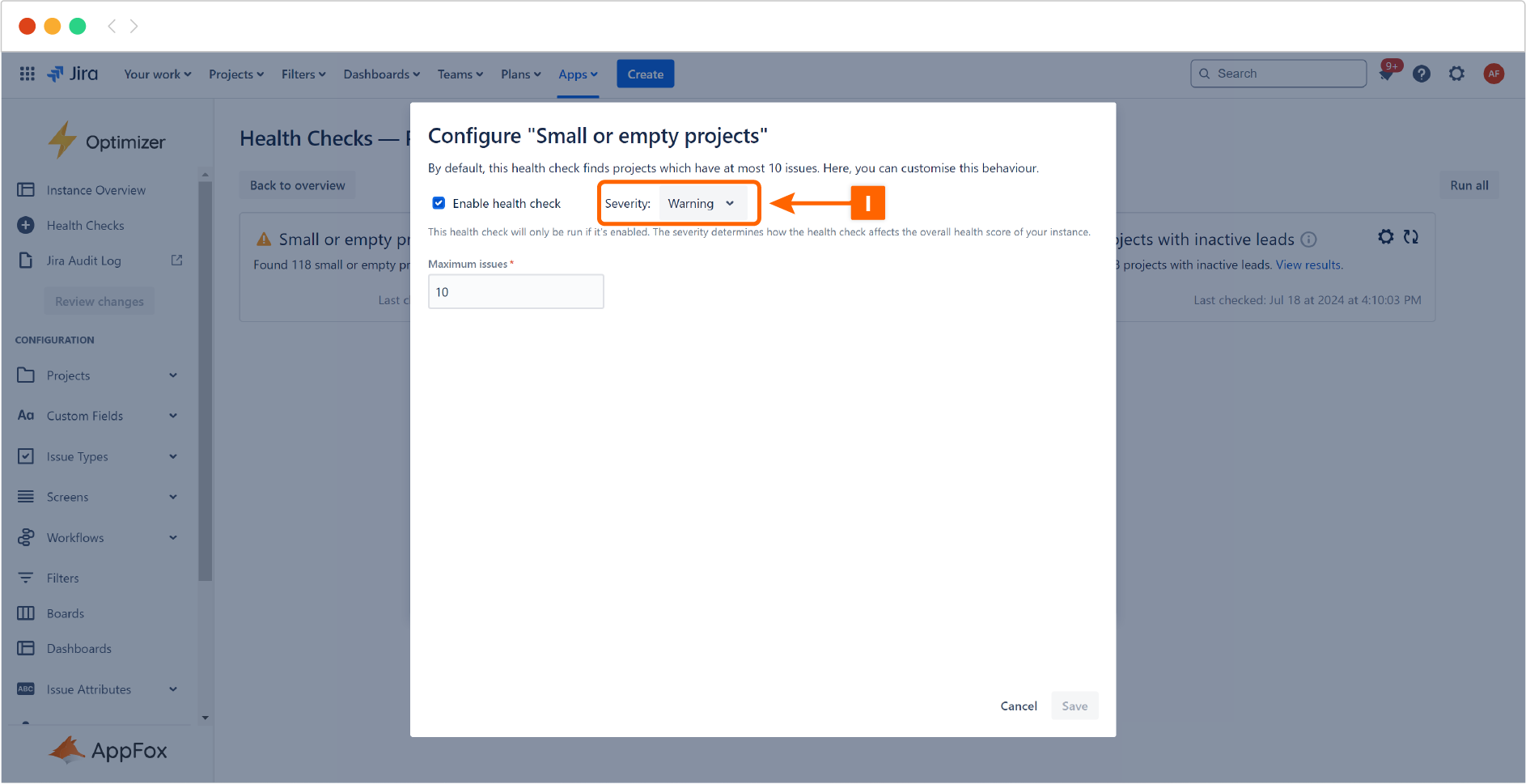
You cannot change the severity of disabled health checks. To set the severity, you first need to re-enable the health check.
Viewing health check history
The health check overview page shows the results of the latest run of each check. To see the history of how your instance’s results have changed over time, click the View history button. From there you can view the history in either a table or graph format:
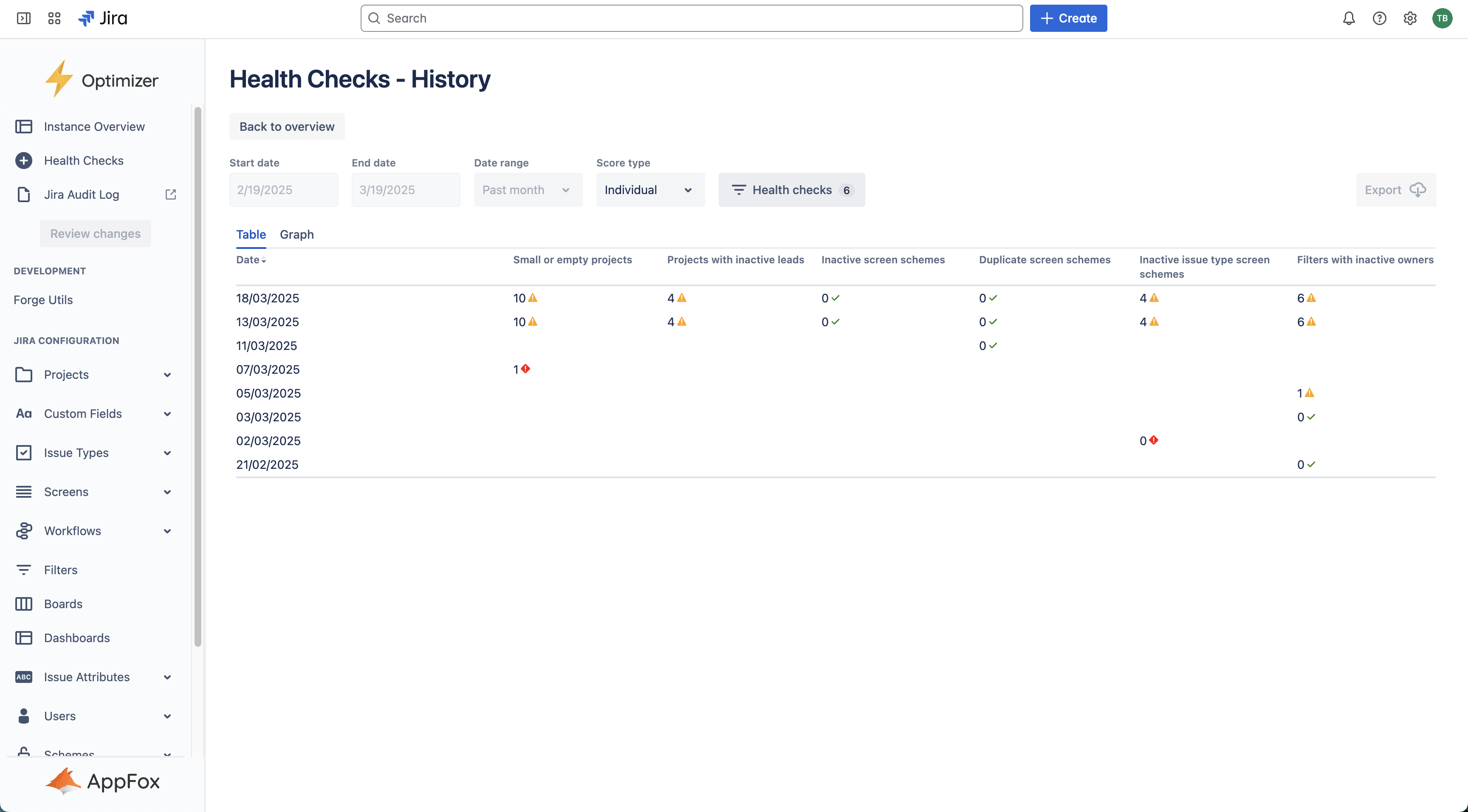
Health check history table, showing the results of 6 checks over time.
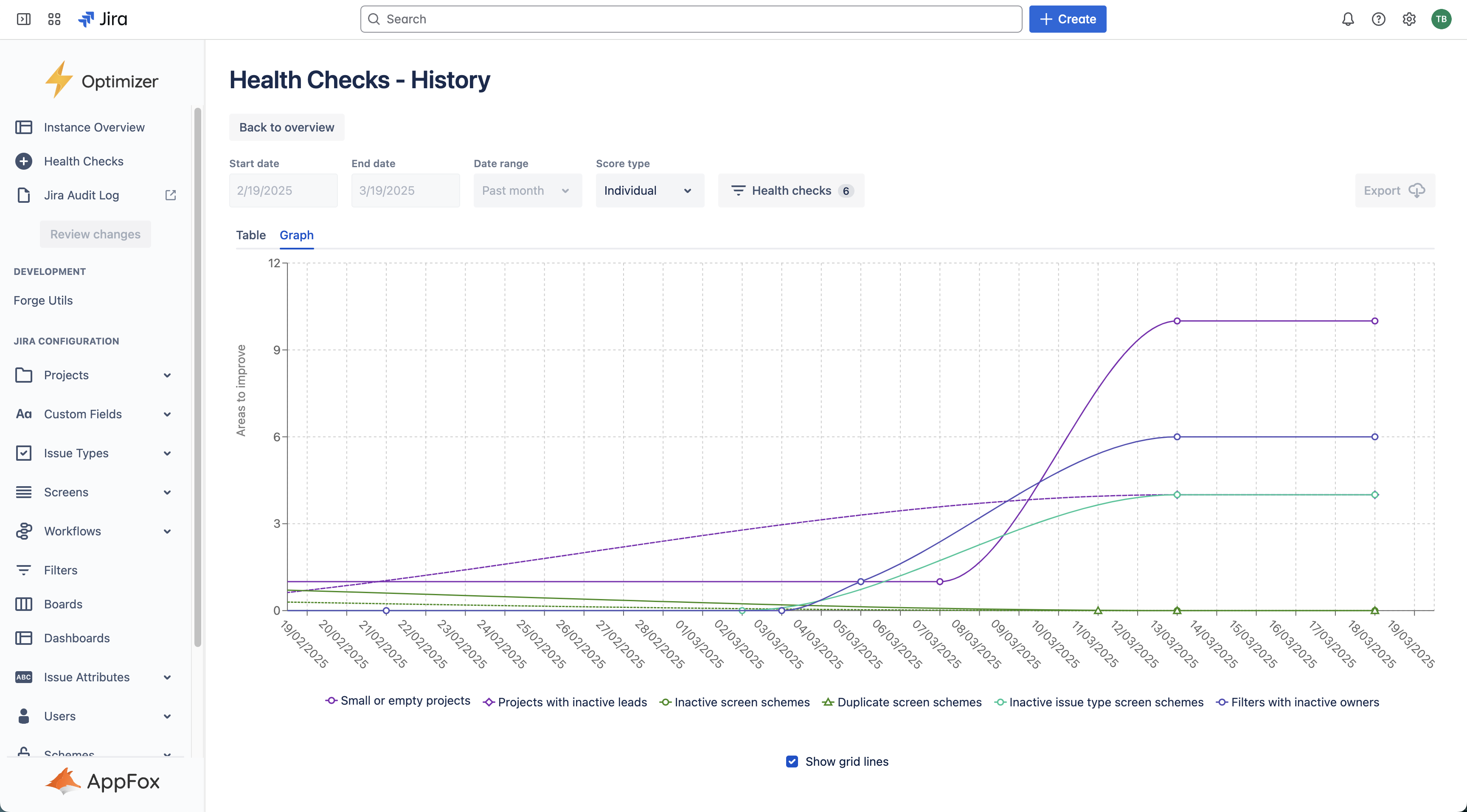
Health check history graph, showing the results of 6 checks over time.
You can set an exact date range for the history data, or choose from one of the presets in the Date range dropdown (last 7 days, 30 days, 3 months, 6 months, 1 year).
With the Score type dropdown, you can choose between the Overall and Individual views. The Overall view shows how the overall health check score of your instance has changed over time, and which health checks were a pass/warning/fail on each day. The Individual view shows the number of results found by each health check. The Health checks filter button allows you to select a subset of checks for which to show history data.
Finally, you can also export the history data with the Export button, which allows you to choose either a CSV or PDF format. This can be useful for viewing the data and creating custom charts in external software such as Excel.
Users on the Standard edition of Optimizer for Jira Cloud will be able to access 1 month of history data, and cannot export the data – upgrade to the Advanced edition to gain access to unlimited history data and the Export feature.
Need support? We’re here to help 🧡
If you have any questions about Optimizer or would like to speak with us, please don’t hesitate to contact our Customer Support team.
.svg)